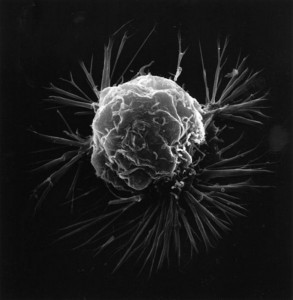Screening aims to detect disease in its early stages while there’s still a chance that treatment will be effective. Programmes are usually targeted at people who are at high risk of developing a particular disease. For example, the NHS invites people over the age of 60 to be screened for bowel cancer because age is a risk factor for the disease – the older you are, the greater the risk. And for women, breast screening is automatically offered between the ages of 50-70.
But if men can get breast cancer too, why are they not included in screening programmes?
For a screening programme to be effective, a number of conditions must be met. For a start, the test should be relatively safe and it should be accurate. The main screening test for breast cancer in women is mammography. Mammography includes the use of ionising radiation, which can itself induce cancer (although the likelihood is extremely small) and the risk of a false positive diagnosis which leads to further unpleasant diagnostic tests and unnecessary anxiety.
No diagnostic test is 100% accurate. But it should be accurate enough to detect the disease in most cases but not so sensitive that it detects disease when there isn’t any. Some “detect” disease that isn’t there (the “false positives”) while some fail to detect actual cases of the disease (“false negatives”). A good diagnostic test will minimise these types of errors to a negligible level.
Having an accurate test isn’t enough, though. There must be a treatment for the disease that can significantly improve the patient’s prospects. This could be a cure, but it is more often about improving the patient’s life expectancy beyond what would normally be expected if the disease was left untreated. Early detection can also result in treatment that is less invasive than if it was left until the advanced stages…
For the full article, please click here
